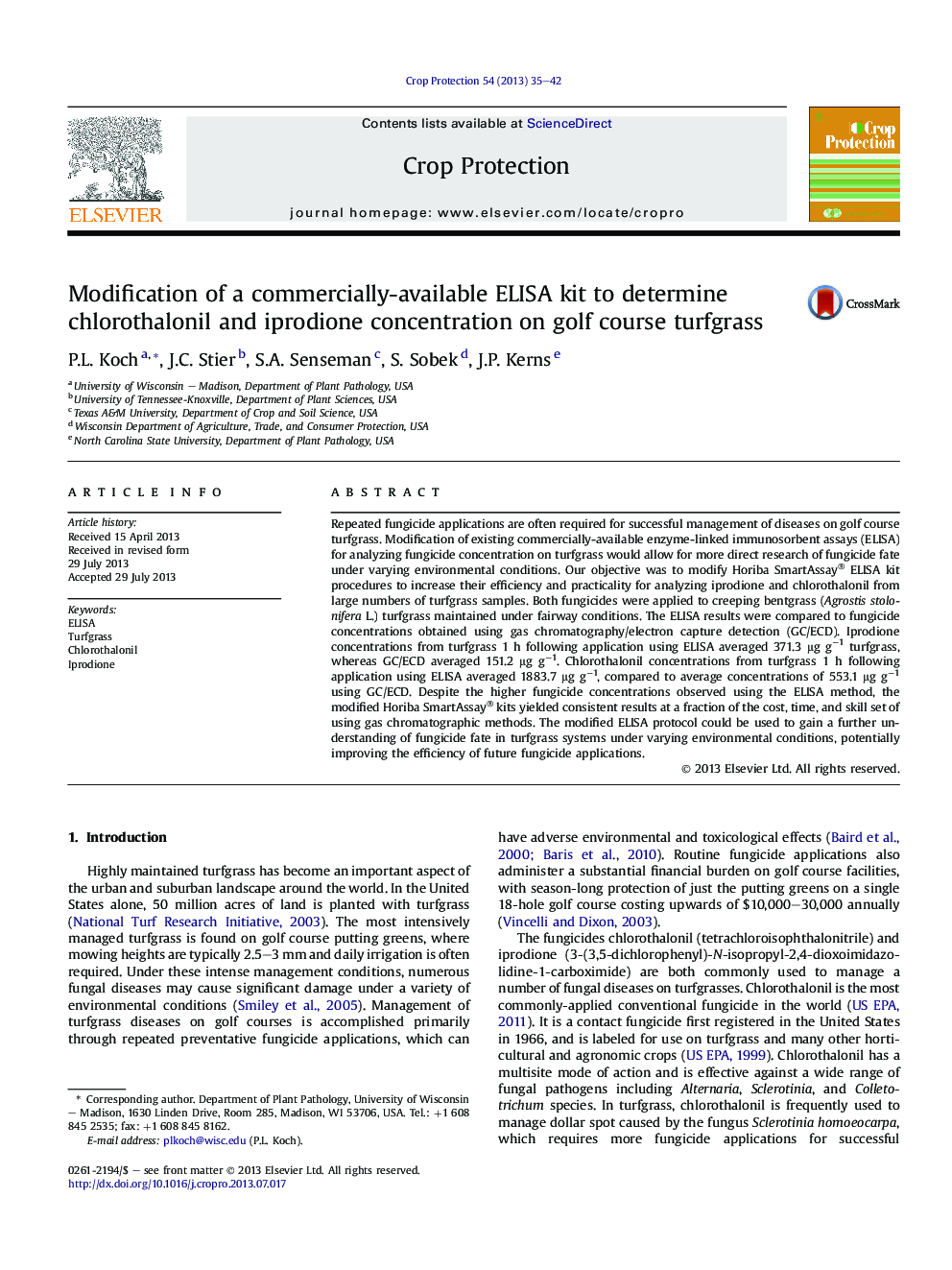| Article ID | Journal | Published Year | Pages | File Type |
|---|---|---|---|---|
| 6373788 | Crop Protection | 2013 | 8 Pages |
Abstract
Repeated fungicide applications are often required for successful management of diseases on golf course turfgrass. Modification of existing commercially-available enzyme-linked immunosorbent assays (ELISA) for analyzing fungicide concentration on turfgrass would allow for more direct research of fungicide fate under varying environmental conditions. Our objective was to modify Horiba SmartAssay® ELISA kit procedures to increase their efficiency and practicality for analyzing iprodione and chlorothalonil from large numbers of turfgrass samples. Both fungicides were applied to creeping bentgrass (Agrostis stolonifera L.) turfgrass maintained under fairway conditions. The ELISA results were compared to fungicide concentrations obtained using gas chromatography/electron capture detection (GC/ECD). Iprodione concentrations from turfgrass 1 h following application using ELISA averaged 371.3 μg gâ1 turfgrass, whereas GC/ECD averaged 151.2 μg gâ1. Chlorothalonil concentrations from turfgrass 1 h following application using ELISA averaged 1883.7 μg gâ1, compared to average concentrations of 553.1 μg gâ1 using GC/ECD. Despite the higher fungicide concentrations observed using the ELISA method, the modified Horiba SmartAssay® kits yielded consistent results at a fraction of the cost, time, and skill set of using gas chromatographic methods. The modified ELISA protocol could be used to gain a further understanding of fungicide fate in turfgrass systems under varying environmental conditions, potentially improving the efficiency of future fungicide applications.
Related Topics
Life Sciences
Agricultural and Biological Sciences
Agronomy and Crop Science
Authors
P.L. Koch, J.C. Stier, S.A. Senseman, S. Sobek, J.P. Kerns,
